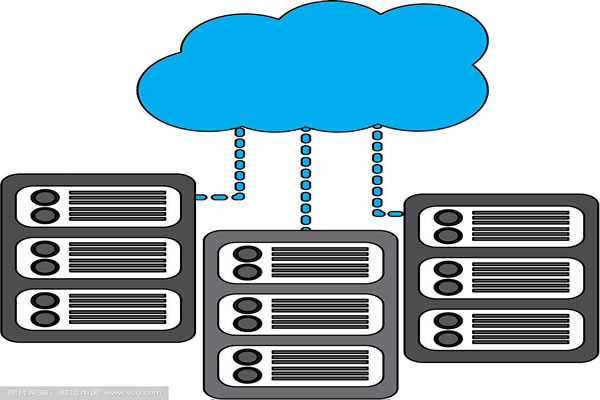In the Internet age, choosing the right server is crucial to the speed and stability of the website. Thai servers have attracted more and more users due to their superior network environment and good cost-effectiveness. This article will provide you with a simple tutorial to teach you how to register a Thai server and help you complete the application and setup of the server smoothly.
Understand the advantages of Thai servers
Before registering a Thai server, it is very important to understand its advantages. Thai servers usually have low latency, high-speed network connections and good bandwidth, which makes them particularly suitable for users in Southeast Asia. In addition, Thailand's Internet infrastructure is constantly improving and the number of data centers is increasing year by year. Therefore, choosing a Thai server can effectively improve the access speed and user experience of your website.
Choose the right service provider
When registering a Thai server, you must first choose a reliable service provider. There are many companies on the market that offer Thai servers and you need to compare them according to your needs. Pay attention to factors such as service provider reputation, technical support, server type (such as VPS, independent server) and other factors. At the same time, check user reviews and feedback to ensure that the selected service provider can provide stable services and timely technical support.
Prepare for registration information
After choosing a good service provider, you need to prepare some necessary information for smooth registration. This usually includes personal or company information, such as name, email, contact number and address. In addition, you will need to provide payment information to complete the registration and purchase process. Ensure the accuracy of all information to avoid subsequent hassle.
Register online
After visiting the official website of your selected service provider, look for the "Register" or "Buy" buttons. After clicking, you will be directed to the registration page. On this page, enter the information you prepared before. Usually, you need to select the server configuration, operating system, and other additional services. After confirming that all information is correct, submit an application for registration.
Pay and confirm the order
After submitting your registration application, you will enter the payment process. Service providers usually support multiple payment methods, such as credit cards, PayPal, etc. Choose the payment method that suits you and complete the payment. After payment, you will receive a confirmation email containing your server information and login information for the management control panel.
Log in to the management control panel
After you complete the payment, you can access the server's management control panel using the received login information. In the control panel, you can make various settings, such as installing the operating system, configuring the network, and security settings. Make sure to make appropriate adjustments as needed to maximize server performance and security.
Install the necessary software and applications
After logging into the management control panel, you may need to install some necessary software and applications. For example, you can install a web server (such as Apache or Nginx), a database (such as MySQL or PostgreSQL), and so on. According to your needs, select the appropriate software and install and configure it according to the documents provided by the service provider.
Make security settings
Security is a part of server management that cannot be ignored. After registering a Thai server, you need to make necessary security settings, such as changing the default password, configuring a firewall, regularly updating the software, etc. Also, consider enabling SSH key authentication and disabling root login to enhance server security.
Monitor and maintain servers
Regular monitoring and maintenance are essential after registering a Thai server. You can use monitoring tools to track server performance and traffic in real time. Back up data regularly to prevent data loss. Adjust the server configuration as needed to ensure it is always in optimal condition.
Summary and suggestions
Registering a Thai server is not complicated, just follow the steps above. When choosing a service provider, be careful to ensure that it has good reputation and service capabilities. After registration, set up and maintain it in a timely manner to ensure the security and stability of the server. I hope this article can provide you with valuable help and help you successfully complete the registration and management of Thai servers.

- Latest articles
- The Best Choice Recommendation For Hong Kong Managed Server Hosting
- User Experience Sharing Of Trying Korean Vps
- How To Build An Efficient Korean Native Ip Site Group
- Features And Experience Sharing Of Feiyang Cambodia Server
- Understand The High-defense Space Configuration Of Taiwan Vps Native Ip
- How To Choose The Most Cost-effective Us Vps That Is Billed By Traffic
- Differentiated Competitive Strategies For Vietnam And Hong Kong’s Native Ip
- Antai International Plaza Computer Room Usage Experience And Rental Guide
- Advantages And Precautions For Using High-defense Servers Without Registration
- The Impact Of German Server Hosting On Improving Website Seo Rankings
- Popular tags
-
How To Optimize Thai Servers To Improve Computer Performance
Learn how to optimize Thai servers to improve computer performance, improve network speed and user experience, and ensure a stable connection and an efficient working environment. -
Selection And Usage Tips For Thai Website Servers
Learn tips on selecting and using website servers in Thailand to help you optimize website performance and improve user experience. -
How Big Is The Decline In Housing Prices In Thailand's Financial Crisis
Analyze the decline in housing prices during Thailand's financial crisis and explore its impact on the real estate market.


